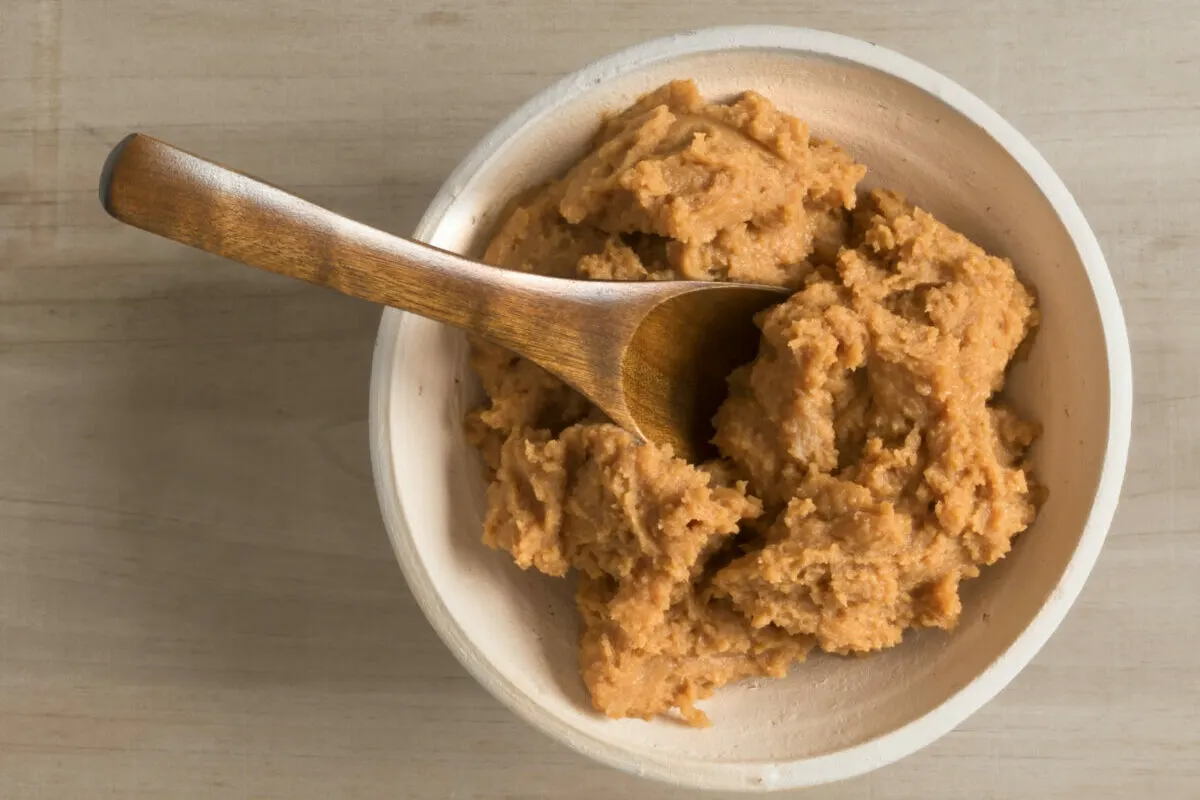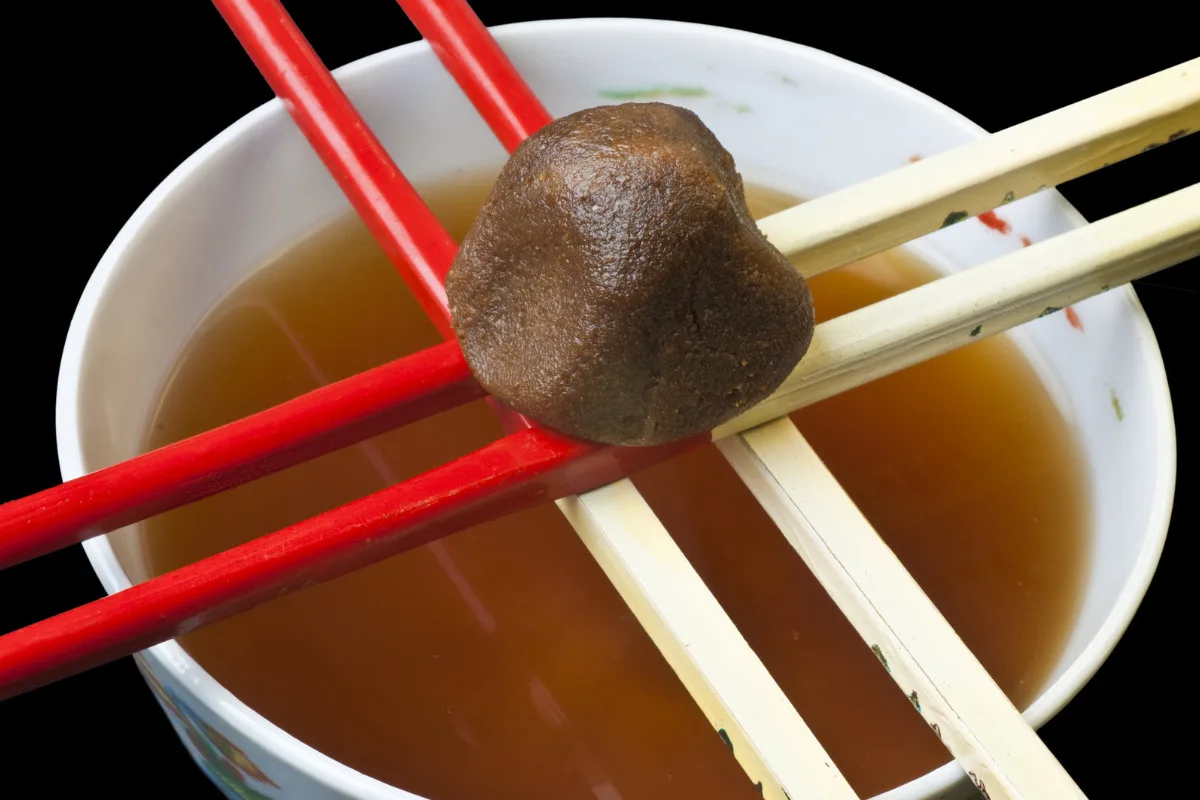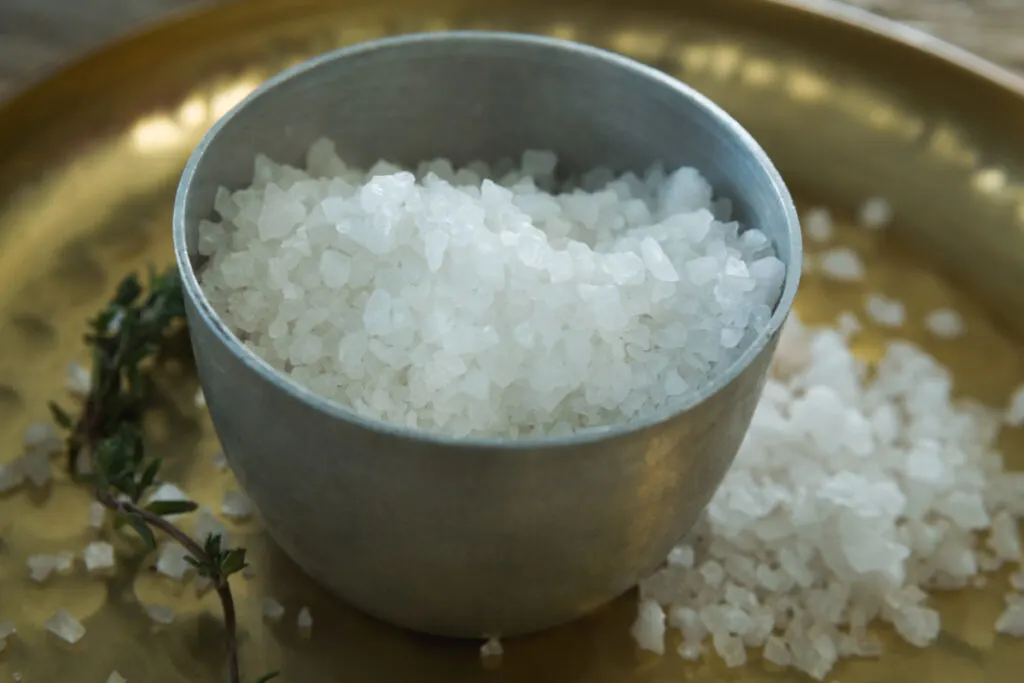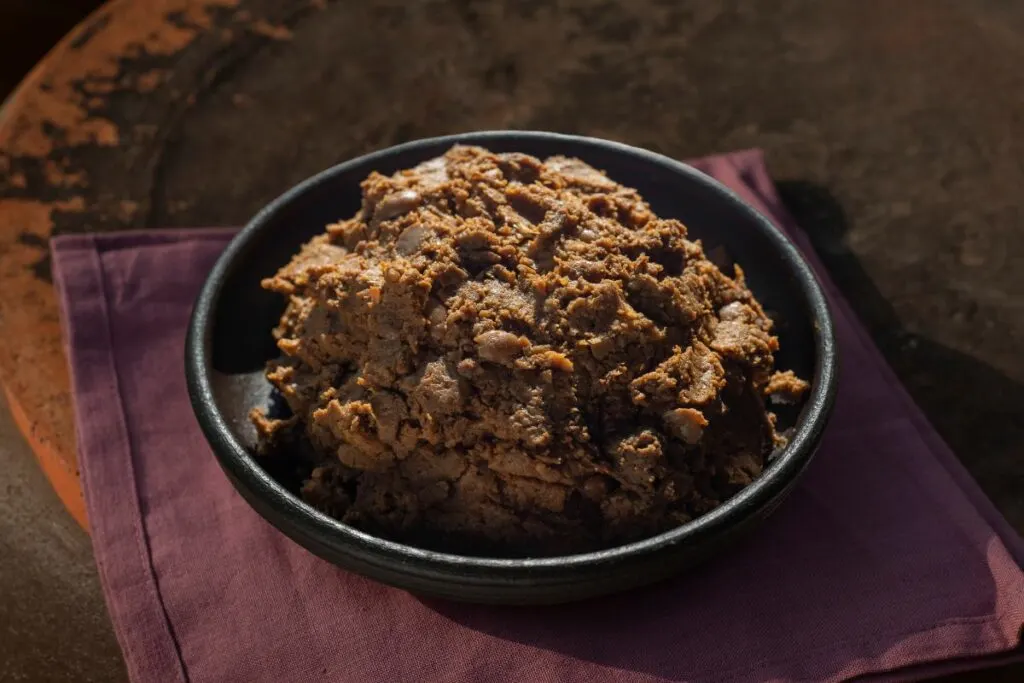Cooking with miso paste is one of my favorite ways to add a unique Japanese twist to my dishes. Whether I’m making a savory miso soup, a flavorful sauce for pork chops, or different Asian sauces, miso paste will always be used in my kitchen. But there have been times when I run out of it. This is when I turn to the best miso paste substitutes around.
You can substitute miso paste with salt, vegetable stock, soy sauce, and tahini, and tamari. But this isn’t all, so let’s jump right into every miso paste swap you can use!

Jump To
🤷 What is Miso Paste?
Miso paste is a traditional Japanese seasoning made from fermented soybeans, and salt. It’s a type of fungus called koji and a unique umami flavor that’s used in soups, marinades, and sugar free salad dressings. Some culinary enthusiasts also blend it with Ponzu sauce substitutes to create a tangy umami-rich combination. There are several types of miso paste available, with the most common being white miso paste and red miso paste.
🧑⚕️ What is Miso Paste made of?
Here is what miso paste is made of:
| Ingredient | Description |
|---|---|
| Soybeans | The main ingredient in miso paste, providing the protein and flavor |
| Rice or Barley | Used as a source of carbohydrates and to balance the flavor |
| Salt | Used to preserve the miso paste and add flavor |
| Koji | A type of fungus that is used to ferment the soybeans, rice or barley |
How to Use Miso Paste
- Soup Base – Miso paste is commonly used as a soup base in Japanese cuisine. Simply dissolve a spoonful of miso paste in hot water or broth, and add vegetables, tofu, or meat to create a delicious and nutritious soup.
- Marinade – It can also be used as a marinade for meat, fish, or tofu. Mix miso paste with other ingredients such as soy sauce, mirin, and ginger to create a flavorful marinade.
- As a Sauce – Miso paste can be used as a sauce for vegetables, noodles, or rice. Mix miso paste with other ingredients such as sesame oil, rice vinegar, and honey to create a tasty and healthy sauce.
- A Dip – Miso paste can be used as a dip for raw vegetables, crackers, or chips. Mix miso paste with other ingredients such as Greek yogurt, lemon juice, and garlic to create a creamy and tangy dip.
- As Seasoning – Miso paste can be used as a seasoning for various dishes. Sprinkle a small amount of miso paste on roasted vegetables, grilled meat, or stir-fried noodles to add a savory and umami flavor.

💡 Best Substitutes for Miso Paste
Vegetable Stock
1 tablespoon of miso paste = 1 tablespoon of vegetable stock
Vegetable stock is a vegan-friendly ingredient that can be used in various dishes, such as soups, stews, and marinades, to add a unique taste that can be tailored to any dish depending on the ingredients used. To use vegetable stock, add it to your dish in the same amount as you would miso paste. You can also customize the flavor of your vegetable stock by adding different vegetables and herbs.
Salt
1 tablespoon of miso paste = 1 pinch of salt
Salt is the cheapest and most common choice for those seeking a miso paste alternative thanks to its ease of access and simplicity. Although it may not offer the same intricate taste as miso paste, it can still provide a savory umami flavor to your meals. You can also combine it with other ingredients, such as soy sauce or Worcestershire sauce, to create a delicious marinade for meats or vegetables.

Tahini
1 tablespoon of miso paste = 2 tablespoons of tahini
Tahini can be an excellent alternative to miso paste as it’s made from ground sesame seeds which have a rich, nutty flavor. This paste does have a thicker texture and a stronger taste than its counterpart. To remedy this, you can dilute it with water or vegetable broth to make it easier to work with. Tahini can be added towards the end of the cooking process or used as a tahini sauce for brussels sprouts, vegetables, or a spread for sandwiches and wraps.
Soy Sauce
1 tablespoon of miso paste = 1/2 tablespoon of soy sauce
Soy sauce, whether light or dark, is a perfect liquid alternative to miso paste. It has a rich, umami flavor similar to miso and is made from fermented soybeans. Although it is saltier than its counterpart, you can easily dilute it with water. It’s also recommended to add soy sauce towards the end of the cooking process. If you can’t find either, or dislike the flavors, you can use light soy sauce substitutes and dark soy sauce substitutes instead.

Fish Sauce
1 tablespoon of miso paste = 1/2 teaspoon of fish sauce
Fish sauce is a delicious Southeast Asian swap for miso paste. Fish sauce and soy sauce show similar qualties to each other, but this option has a better taste to it. It’s made from fermented fish and salt and has an umami flavor profile. Though it can be quite salty it can be used in marinades and Chinese sauces or in grilled chicken and.
Worcestershire Sauce
1/2 tablespoon of miso paste = 1 tablespoon of Worcestershire sauce
If you want to add a tangy and savory flavor to certain Western-style dishes, Worcestershire sauce is just the alternative for you. It’s thinner and has a stronger taste than miso paste. You can add Worcestershire sauce towards the end of the cooking process or use it as a condiment for meat and a flavoring for sauces and dressings.

Umeboshi Paste
1 tablespoon of miso paste = 1 tablespoon of umeboshi paste
Umeboshi paste, or fermented Japanese plum paste, can serve as a viable substitute for miso paste. It has a tangy, salty, and slightly sweet flavor that’s used as a condiment for rice or a flavoring for sauces and dressings. It’s also readily available in Asian grocery stores. To use umeboshi paste, add it towards the end of cooking. If it’s too salty, you can dilute it with water.
Doenjang Or Soybean Paste
1 tablespoon of miso paste = 1/2 tablespoon of doenjang or soybean paste
In some cuisines, notably Korean cuisine, doenjang or soybean paste can be used in place of miso paste. Its spicy, rich taste can give your foods a deeper flavor. This paste is saltier and has a stronger taste, so if you want a more exact flavor, you can use doenjang substitutes instead. To add doenjang to your dish, simply add it towards the end of the cooking process.

Tamari
1 tablespoon of miso paste = 1 tablespoon of tamari
Tamari is a soy sauce made from fermented soybeans and lacks rice or other grains that are present in miso paste. Despite this, tamari has a similarly rich and savory flavor, making it an excellent alternative. This type of soy sauce is also saltier than miso paste, so you’ll need to adjust the amount of salt in your recipe accordingly.
Coconut Aminos
1 tablespoon of miso paste = 1/2 tablespoon of coconut aminos
Coconut aminos can also be used instead of miso paste in certain recipes, particularly in Asian cuisine. It has a sweet and salty taste that can add a unique flavor to your dishes. This pantry staple is also easily accessible in most grocery stores and can be a versatile ingredient in your cooking.
Though when using it as a replacement, remember that it’s thinner and sweeter than miso paste, so you should adjust the amount used in your recipe accordingly. You can always include them towards the end of the cooking or as a dipping sauce for Asian-inspired dishes.
🧐 FAQs
Miso paste has a long shelf life and can last for months, even up to a year, if stored properly. But it should be kept in the refrigerator in an airtight container to prevent it from drying out.
Miso paste has a unique flavor profile that is salty, savory, and slightly sweet. It has a rich umami taste that adds depth and complexity to dishes. White miso is milder and sweeter than red miso.
In a miso soup, you can swap miso paste for soy sauce, tamari, and fish sauce for a similar salty and umami flavor.
